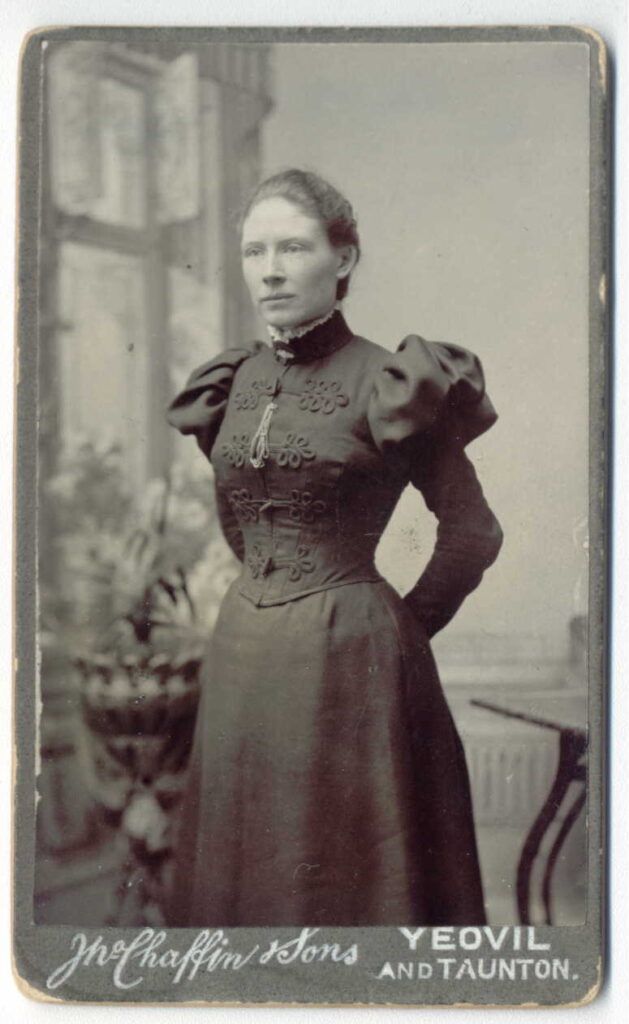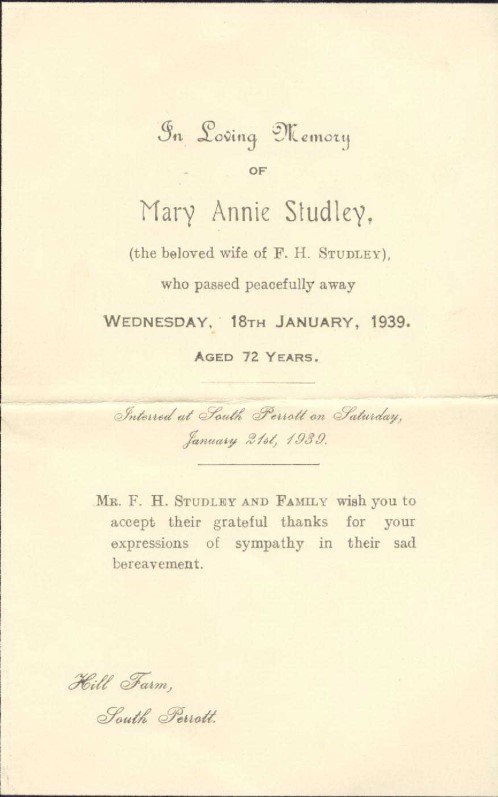Introduction
This is the story of Mary Ann Bartlett, who secured social advancement through her school career as an early teacher in Victorian England’s national school system. This overview highlights her humble origins, professional career in two parishes, and transition to farmer’s wife. While her career is similar to that of thousands of other teachers in her position, the impact of her work is evidenced by the large number of people who attended her funeral to show their respect and gratitude.
Early life at Hardington
Born on 27 January 1866, Mary was the daughter of Emanuel and Virtue Bartlett, who lived at Hill End, Hardington. Although her father was only a farm labourer, her family enjoyed some social standing in the village because her uncle, Henry Bartlett, was the secretary of the friendly society.
Mary must have demonstrated intelligence and application from an early age, as she was a teaching assistant at Hardington School from the age of nine. After seven years in this role, she accepted a position at South Perrott School. When she left Hardington School in April or May 1882, she was presented with a bound album as a leaving present.[1]
Teacher at South Perrott School
In December 1886, she undertook an examination for a teacher’s certificate, successfully achieving a placement in the third division of candidates of the second year. This accomplishment marked her transition from a probationary teacher to a fully certified teacher. After qualifying, she was in charge of South Perrott School from 1887 until her marriage.[2] While at the school, her duties included coaching the children to perform in concerts. In one such concert, held in the schoolroom on 12 April 1899, she herself performed, singing three songs, including one entitled “Golden Love.”[3]
Married life
On 3 January 1901, at South Perrott church, Mary married Frederick Herbert Studley, the son of Hugh Symes Studley of Hill Farm. Mary was 33, and Frederick was 26.
Frederick may have met Mary through his sister, Rosa, who was also a teacher at South Perrott School. Having experienced considerable personal grief growing up, he may have been attracted by her maturity and seriousness. When he was ten, a brother and sister died within weeks of each other; when he was 18, his brother, William Benjamin, died just one year older than himself, and four years later, his sister, Laura Sophia, died at the same age.
After their marriage, Frederick and Mary initially resided at Lewcombe Woods Farm, Evershot, where their first two children were born: Vera Joan on 15 December 1900 and Frederick Hugh on 29 November 1902.[4]
Around 1903, the family moved to Woodcock Farm, Mosterton, where Frederick and Mary’s third child, Charles Reginald, was born. Following the retirement of Frederick’s father from farming in 1916, they moved to Hill Farm, South Perrott.[5]
Frederick’s father died on 19 October 1919, leaving an estate valued at £2,335 14s 9d. Frederick inherited one-quarter of this estate upon his mother’s death on 21 March 1920.[6]
Mary died at Hill Farm on 18 January 1939, aged 72.[7] The parish church was packed for her funeral, and some of her former pupils acted as her bearers.[8]
Frederick died on 10 November 1951, aged 78, leaving effects valued at £6,400-5s-9d.[9]
Children
Frederick and Mary had two sons and one daughter:
1900-Vera Joan (married Thomas John Paull, a farmer’s son, in 1924; died in 1977);
1902-Frederick Hugh (married Christina Annie James, a farmer’s daughter, in 1927; worked with his father at Hill Farm, South Perrott; died in 1978);
1905-Charles Reginald (educated at Crewkerne School; married Winifred Doris Barnes, the daughter of a brickworks foreman, in 1930; a commercial traveller and licensee of the Bakers Arms, South Perrott; committed suicide on 19 March 1939 by deliberating overdosing on insulin).[10]
References
[1] Western Gazette, 5 May 1882 p. 6.
[2] A History of Chedington and South Perrott, compiled by the Perrott and Axe WI, n.d. p.25-27. Photograph of a school group, including Mary, p. 26.
[3] Western Gazette, 14 April 1899, p.7.
[4] Western Gazette, 21 December 1900, p.8; MI at South Perrott.
[5] Western Gazette, 21 January 1916, p.1.
[6] The will of Hugh Symes Studley, dated 28 May 1907, proved at Blandford on 17 March 1920. He left his widow a legacy of £100, any furniture and effects she wished to have, and the income from his estate for life. After her death, he directed his executors to divide his estate equally between his four living children, Frederick Herbert, Matilda Jane, Henry John (who lived in Canada) and Rosa Amy.
[7] Western Gazette, 20 January 1939, p.16.
[8] Express and Echo, 24 January 1939, p.4.
[9] Probate calendar.
[10] Western Gazette, 24 March 1939, p.6.
Acknowledgment
I am grateful to Jan Wood Strum for the pictures below.



